Passpoint-Respiratory questions with the correct response
Document Content and Description Below
Question 1 See full question A client with asthma has been taking theophylline as ordered. Now, the client's blood theophylline level is 4.8 mcg/ml. Which dosage change will the physician order... ? You Selected: ⦁ Maintain the dose. Correct response: ⦁ Increase the dose. Explanation: Remediation: Question 2 See full question A nurse notices that a client admitted for exacerbation of chronic obstructive pulmonary disease is short of breath. The client has signed an advance directive indicating that he doesn't want to be resuscitated. The nurse should: You Selected: ⦁ not provide any care. Correct response: ⦁ check the client's oxygen saturation. Explanation: Remediation: Question 3 See full question The nurse is teaching a client who will be undergoing a lung resection. The client is told that two chest tubes will be placed during surgery. The nurse explains that the purpose of the lower chest tube is to: You Selected: ⦁ remove air. Correct response: ⦁ remove fluid. Explanation: Remediation: Question 4 See full question The nurse is planning to teach the client how to properly use a metered-dose inhaler to treat asthma. The nurse should tell the client to: You Selected: ⦁ cough and deep-breathe before inhaling the medication. Correct response: ⦁ rinse the mouth after each use of a steroid inhaler. Explanation: Question 5 See full question The nurse has administered aminophylline to a client with emphysema. The medication is effective when there is: You Selected: ⦁ efficient pulmonary circulation. Correct response: ⦁ relaxation of smooth muscles in the bronchioles. Explanation: Question 6 See full question An adolescent with cystic fibrosis has been hospitalized several times. On the latest admission, the client has labored respirations, fatigue, malnutrition, and failure to thrive. Which initial nursing actions are most important? You Selected: ⦁ applying an oximeter and initiating respiratory therapy Correct response: ⦁ applying an oximeter and initiating respiratory therapy Explanation: Remediation: Question 7 See full question After a total laryngectomy, the client has a feeding tube. The feeding tube is effective if the tube feedings: You Selected: ⦁ prevent fistula formation. Correct response: ⦁ meet the fluid and nutritional needs of the client. Explanation: Remediation: Question 8 See full question A client with bacterial pneumonia is to be started on IV antibiotics. Which diagnostic tests must be completed before antibiotic therapy begins? You Selected: ⦁ red blood cell count Correct response: ⦁ sputum culture Explanation: Remediation: Question 9 See full question The nurse assesses the respiratory status of a client who is experiencing an exacerbation of chronic obstructive pulmonary disease (COPD) secondary to an upper respiratory tract infection. Which findings is expected? You Selected: ⦁ coarse crackles and rhonchi Correct response: ⦁ coarse crackles and rhonchi Explanation: Remediation: Question 10 See full question A client is prescribed metaproterenol via a metered-dose inhaler, two puffs every 4 hours. The nurse instructs the client to report which adverse effect? You Selected: ⦁ decreased pulse rate Correct response: ⦁ irregular heartbeat Explanation: Question 11 See full question A client who underwent a lobectomy and has a water-seal chest drainage system is breathing with a little more effort and at a faster rate than 1 hour ago. The client's pulse rate is also increased. The nurse should: You Selected: ⦁ check the tubing to ensure that the client is not lying on it or kinking it. Correct response: ⦁ check the tubing to ensure that the client is not lying on it or kinking it. Explanation: Remediation: Question 12 See full question Which action should the nurse anticipate in a client who has been diagnosed with acute respiratory distress syndrome (ARDS)? You Selected: ⦁ use of a nasal cannula Correct response: ⦁ mechanical ventilation Explanation: Remediation: Question 13 See full question When performing the Heimlich maneuver on a conscious adult victim, the rescuer delivers inward and upward thrusts specifically: You Selected: ⦁ above the umbilicus. Correct response: ⦁ below the xiphoid process and above the umbilicus. Explanation: Remediation: Question 14 See full question While reviewing the arterial blood gas values of a client with emphysema, the nurse should identify which PaCO2 values as indicating the need for immediate intervention? You Selected: ⦁ 80 mm Hg Correct response: ⦁ 80 mm Hg Explanation: Remediation: Question 15 See full question An expected outcome of theophylline ethylenediamine when administered to a client with chronic obstructive pulmonary disease is: You Selected: ⦁ strengthen myocardial contractions. Correct response: ⦁ relax bronchial smooth muscle. Explanation: Question 16 See full question After suctioning a client’s tracheostomy tube, the nurse waits a few minutes before suctioning again. The nurse should use intermittent suction primarily to help prevent: You Selected: ⦁ depriving the client of sufficient oxygen supply. Correct response: ⦁ depriving the client of sufficient oxygen supply. Explanation: Remediation: Question 17 See full question Which assessment finding puts a client at increased risk for epistaxis? You Selected: ⦁ History of nasal surgery Correct response: ⦁ Cocaine use Explanation: Remediation: Question 18 See full question A client with chronic obstructive pulmonary disease (COPD) is intubated and placed on continuous mechanical ventilation. Which equipment is most important for the nurse to keep at this client's bedside? You Selected: ⦁ Oxygen analyzer Correct response: ⦁ Manual resuscitation bag Explanation: Remediation: Question 19 See full question A client is receiving supplemental oxygen. When determining the effectiveness of oxygen therapy, which arterial blood gas value is most important? You Selected: ⦁ Bicarbonate (HCO3–) Correct response: ⦁ Partial pressure of arterial oxygen (PaO2) Explanation: Remediation: Question 20 See full question A client with influenza is admitted to an acute care facility. The nurse monitors the client closely for complications. What is the most common complication of influenza? You Selected: ⦁ Pulmonary edema Correct response: ⦁ Pneumonia Explanation: Remediation: Question 21 See full question A home health nurse is visiting a home care client with advanced lung cancer. Upon assessing the client, the nurse discovers wheezing, bradycardia, and a respiratory rate of 10 breaths/minute. These signs are associated with which condition? You Selected: ⦁ Delirium Correct response: ⦁ Hypoxia Explanation: Remediation: Question 22 See full question The amount of air inspired and expired with each breath is called: You Selected: ⦁ vital capacity. Correct response: ⦁ tidal volume. Explanation: Remediation: Question 23 See full question For a client who has a chest tube connected to a closed water-seal drainage system, the nurse should include which action in the care plan? You Selected: ⦁ Keeping the collection chamber at chest level Correct response: ⦁ Measuring and documenting the drainage in the collection chamber Explanation: Remediation: Question 24 See full question Before weaning a client from a ventilator, which assessment parameter is the most important for the nurse to obtain? You Selected: ⦁ Electrocardiogram (ECG) results Correct response: ⦁ Baseline arterial blood gas (ABG) levels Explanation: Remediation: [Show More]
Last updated: 2 years ago
Preview 1 out of 106 pages

Buy this document to get the full access instantly
Instant Download Access after purchase
Buy NowInstant download
We Accept:

Reviews( 0 )
$14.50
Can't find what you want? Try our AI powered Search
Document information
Connected school, study & course
About the document
Uploaded On
Mar 23, 2021
Number of pages
106
Written in
Additional information
This document has been written for:
Uploaded
Mar 23, 2021
Downloads
0
Views
99

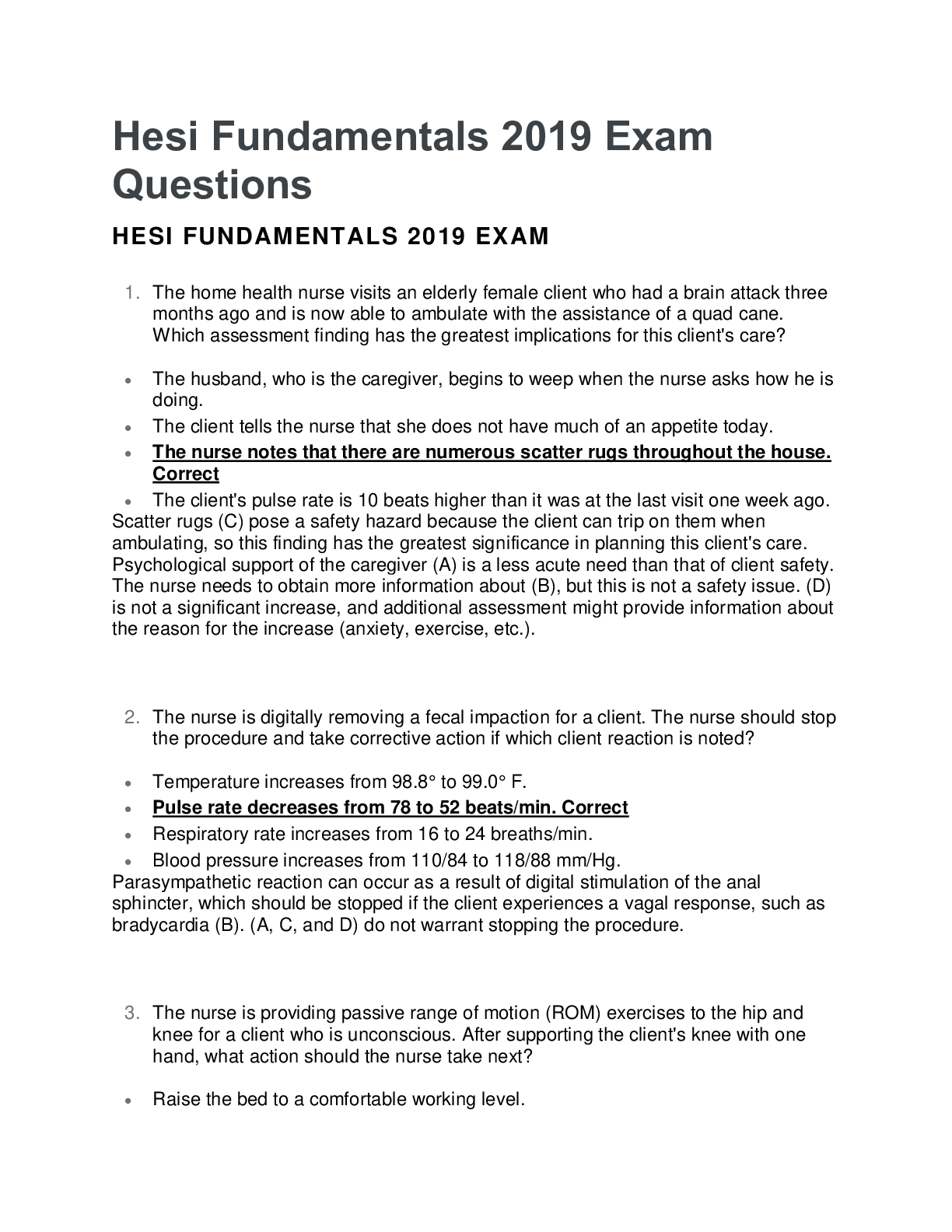
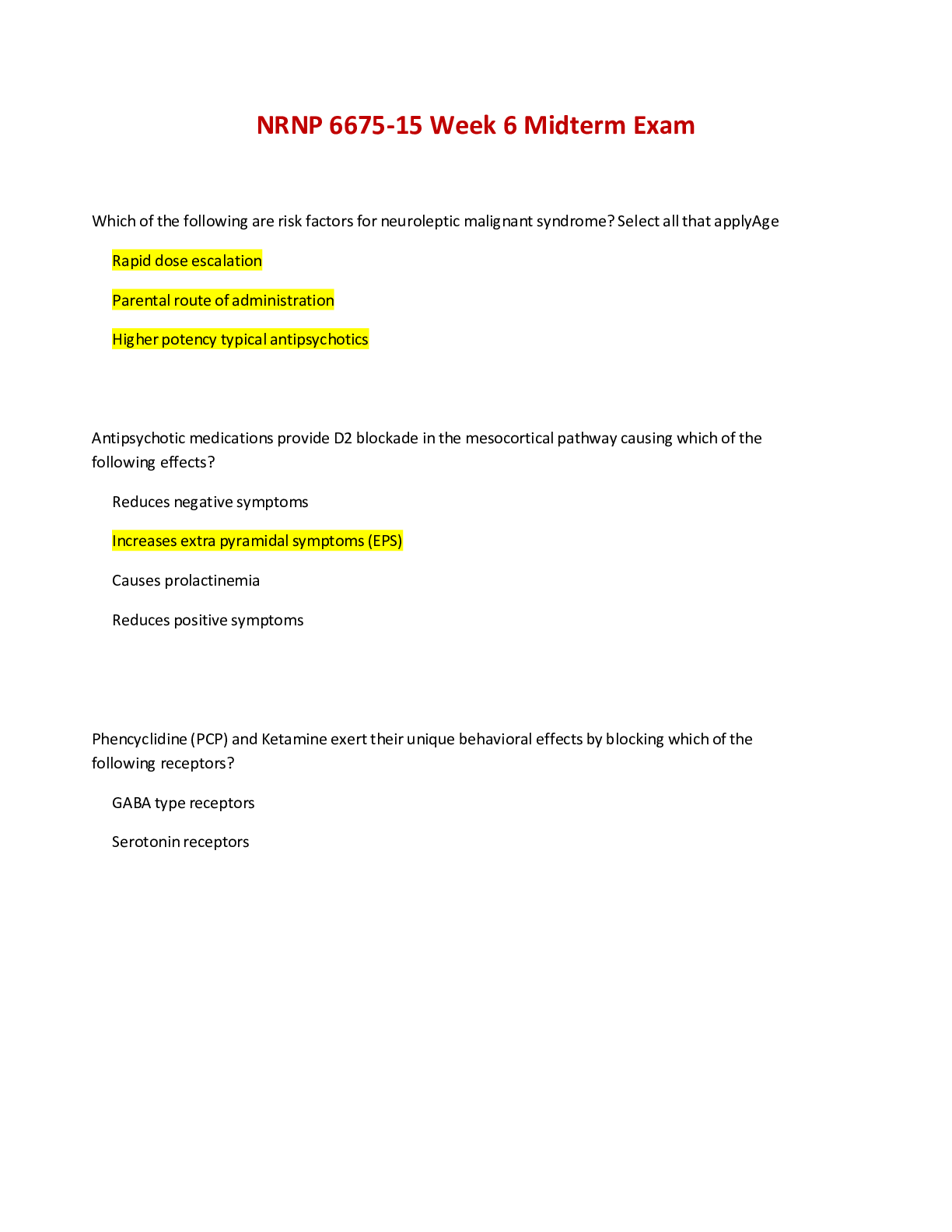
.png)
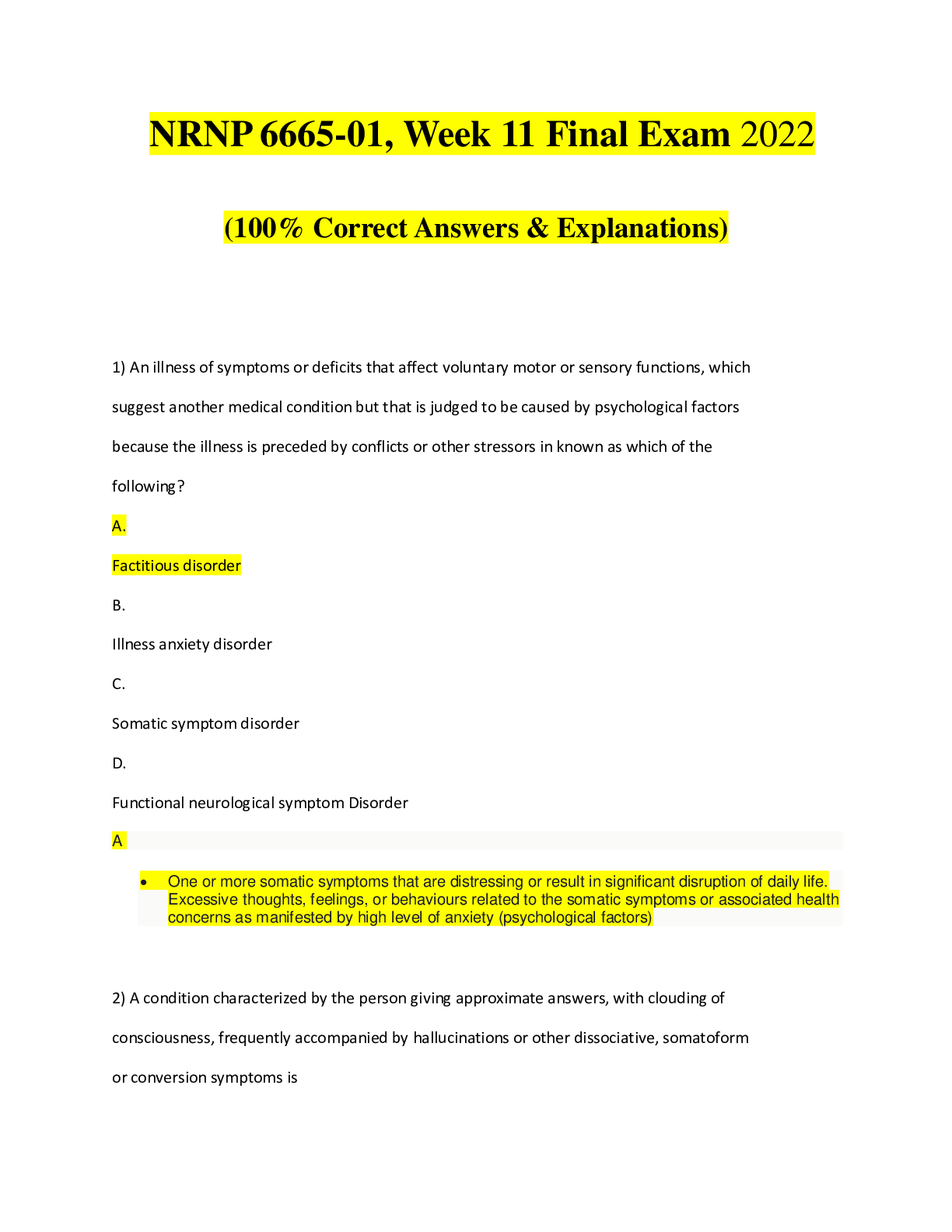
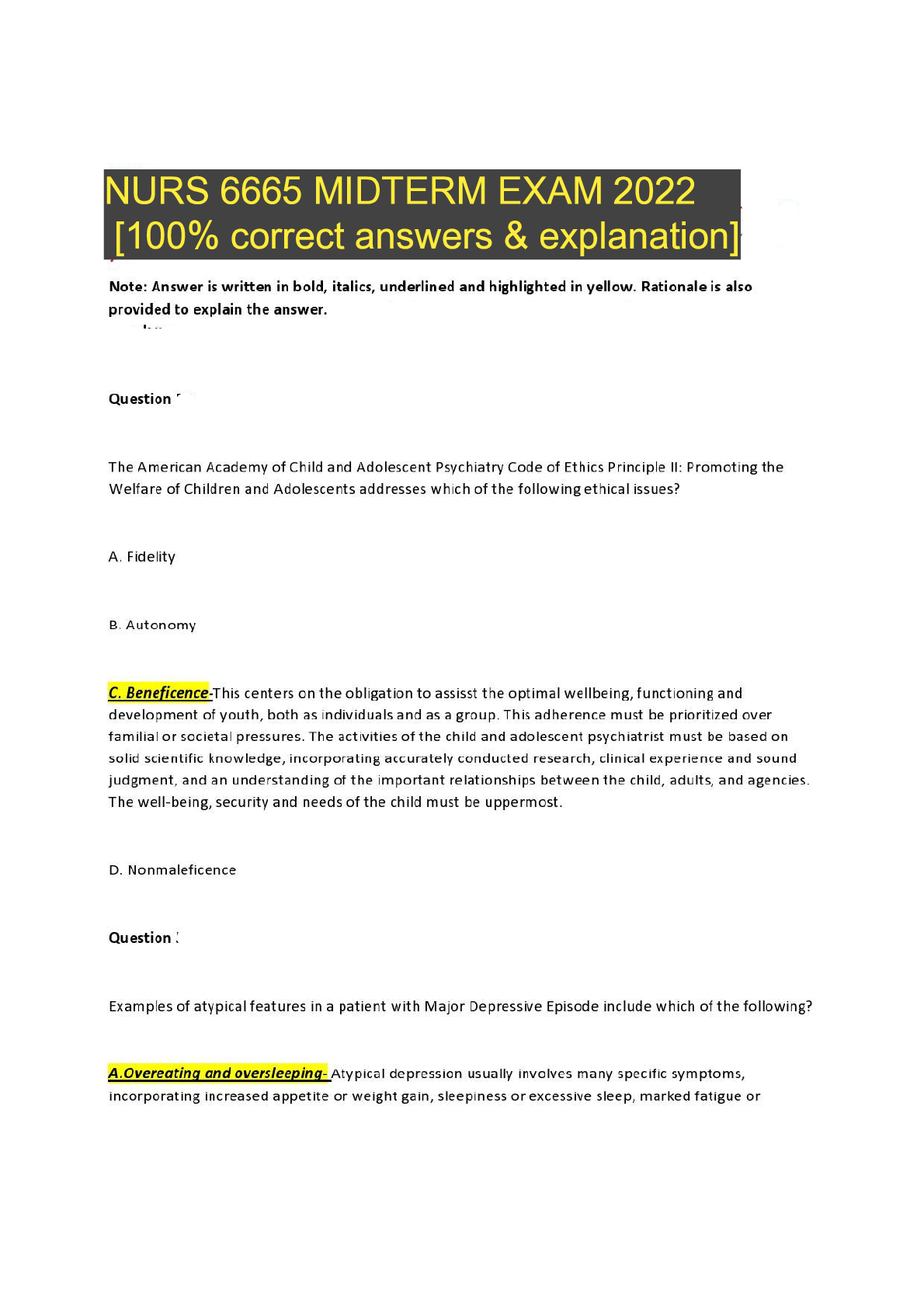
.png)
_removed.png)
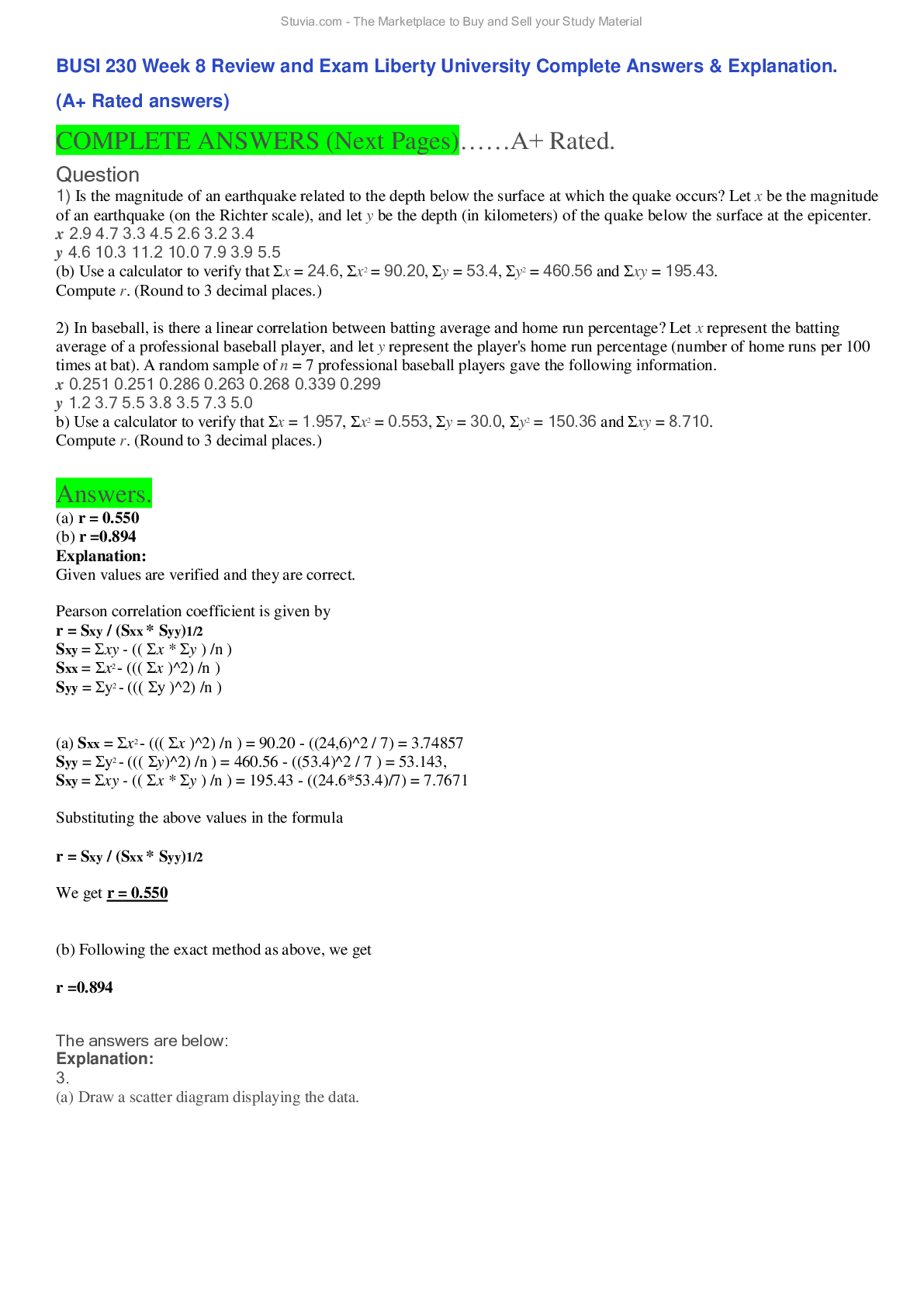
 (1)_removed.png)
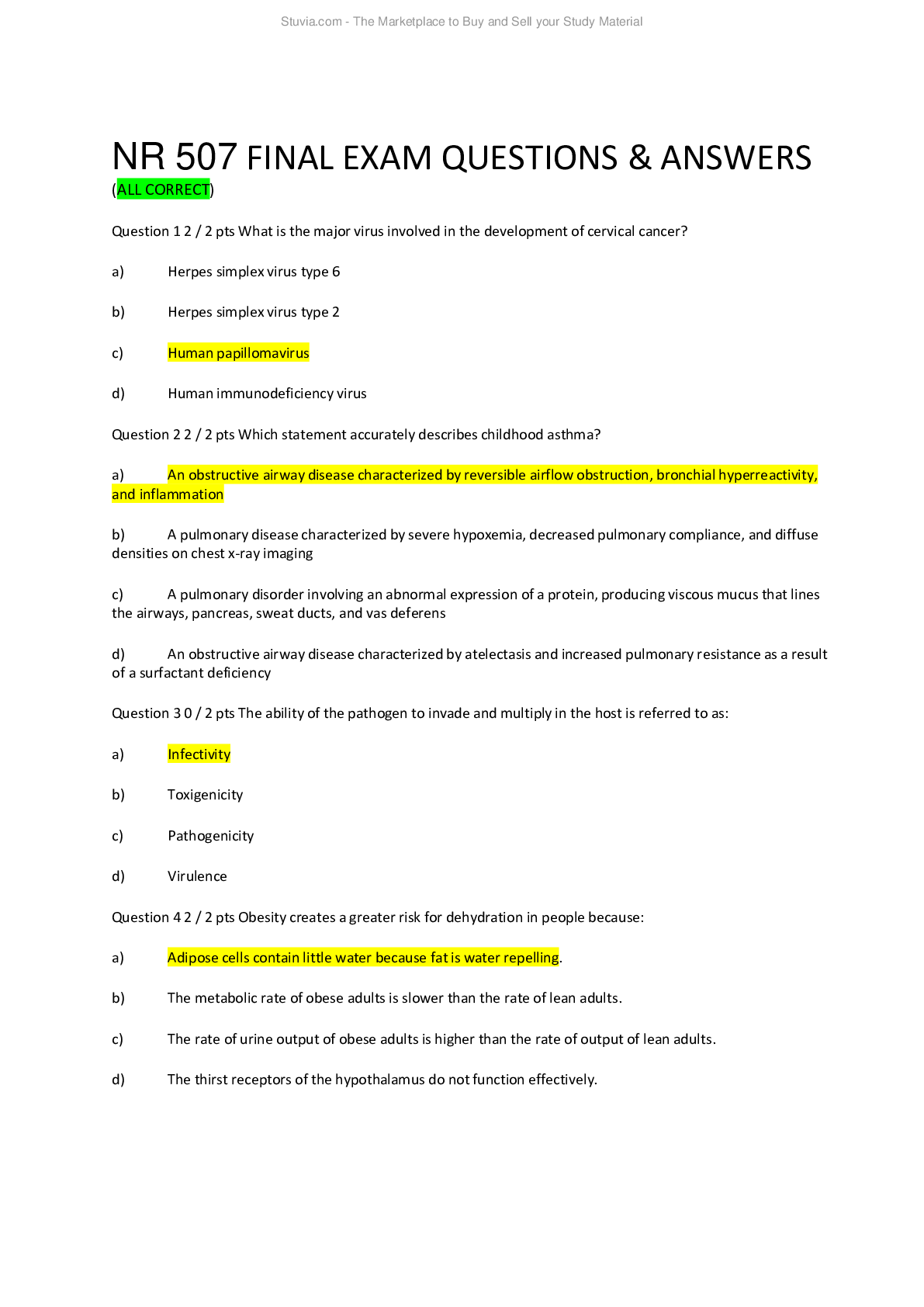
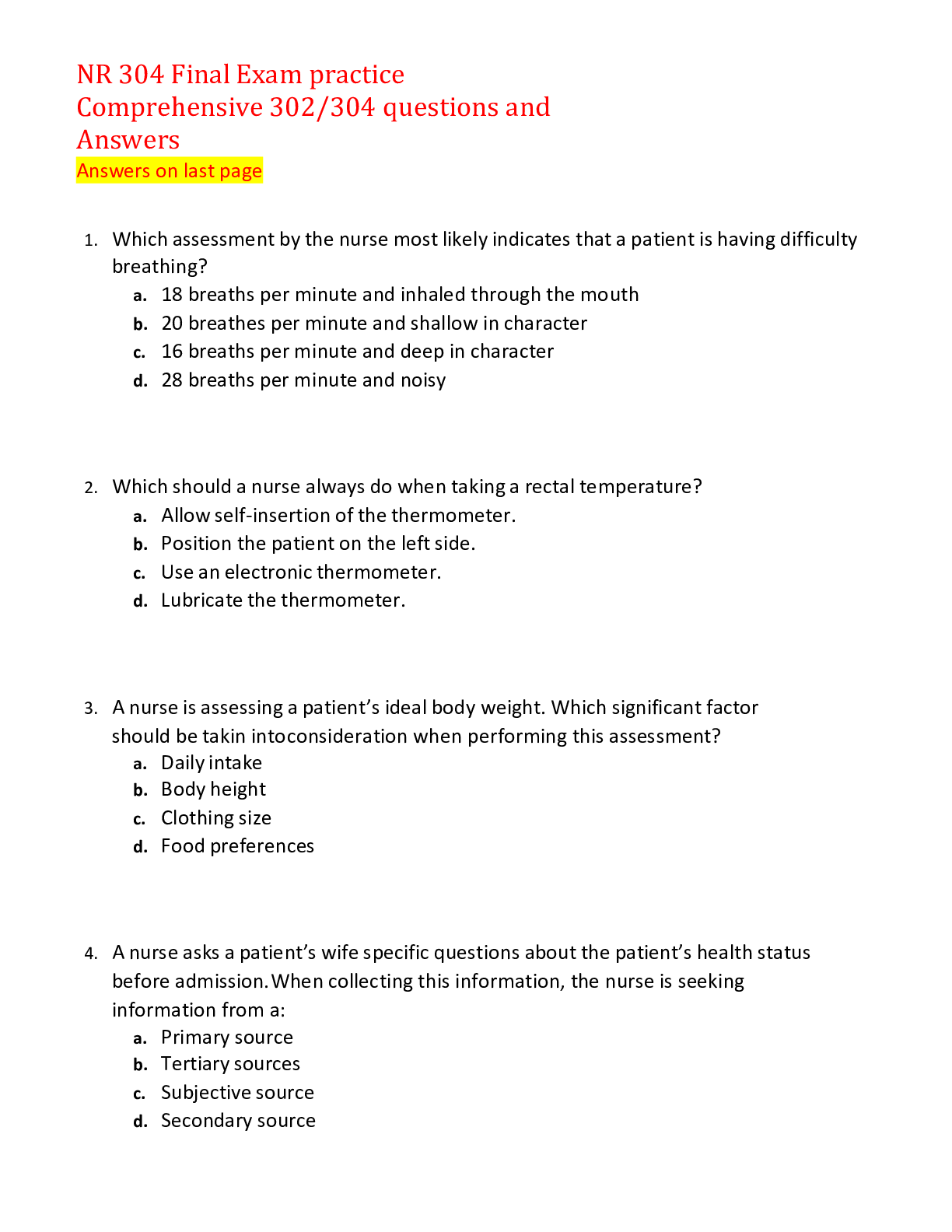
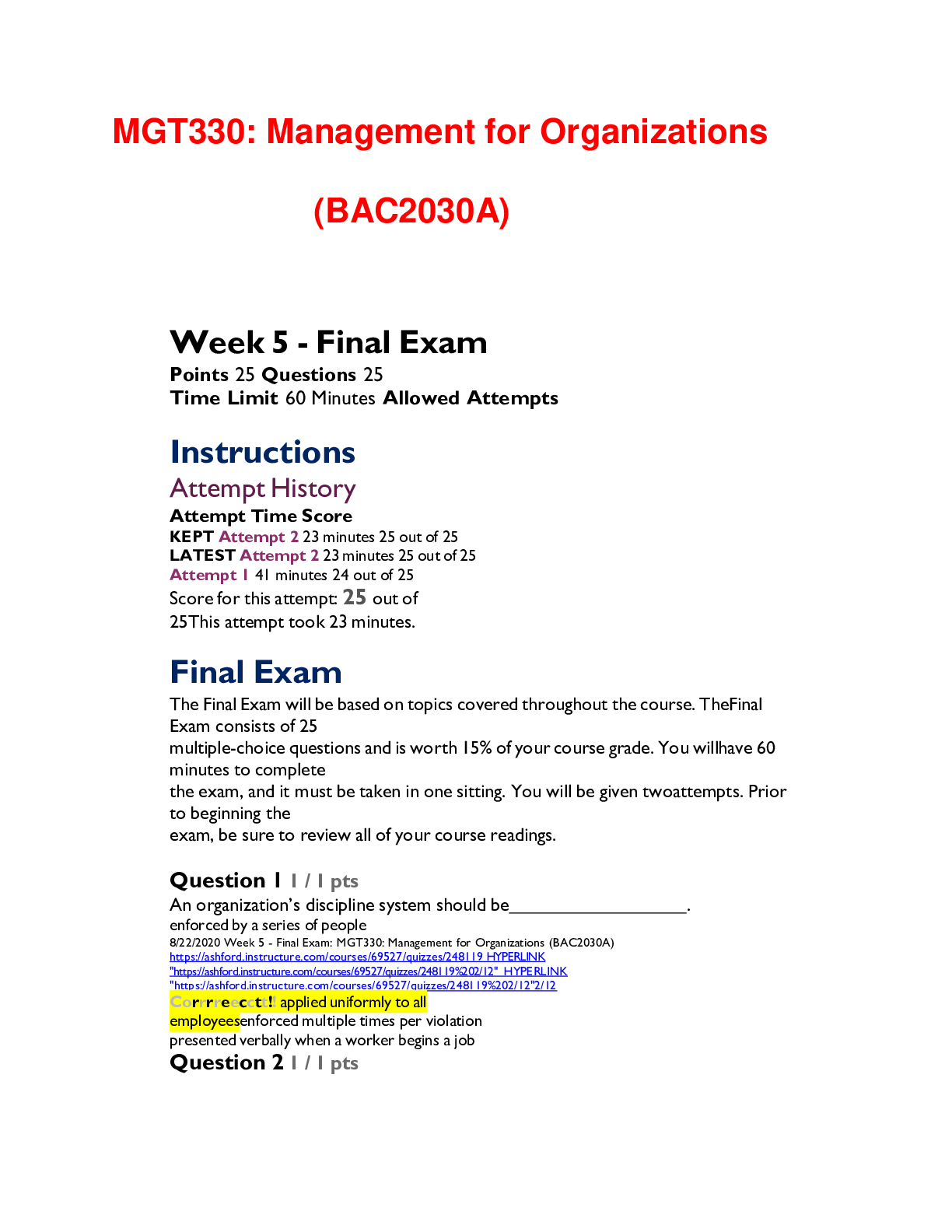


.png)
.png)







